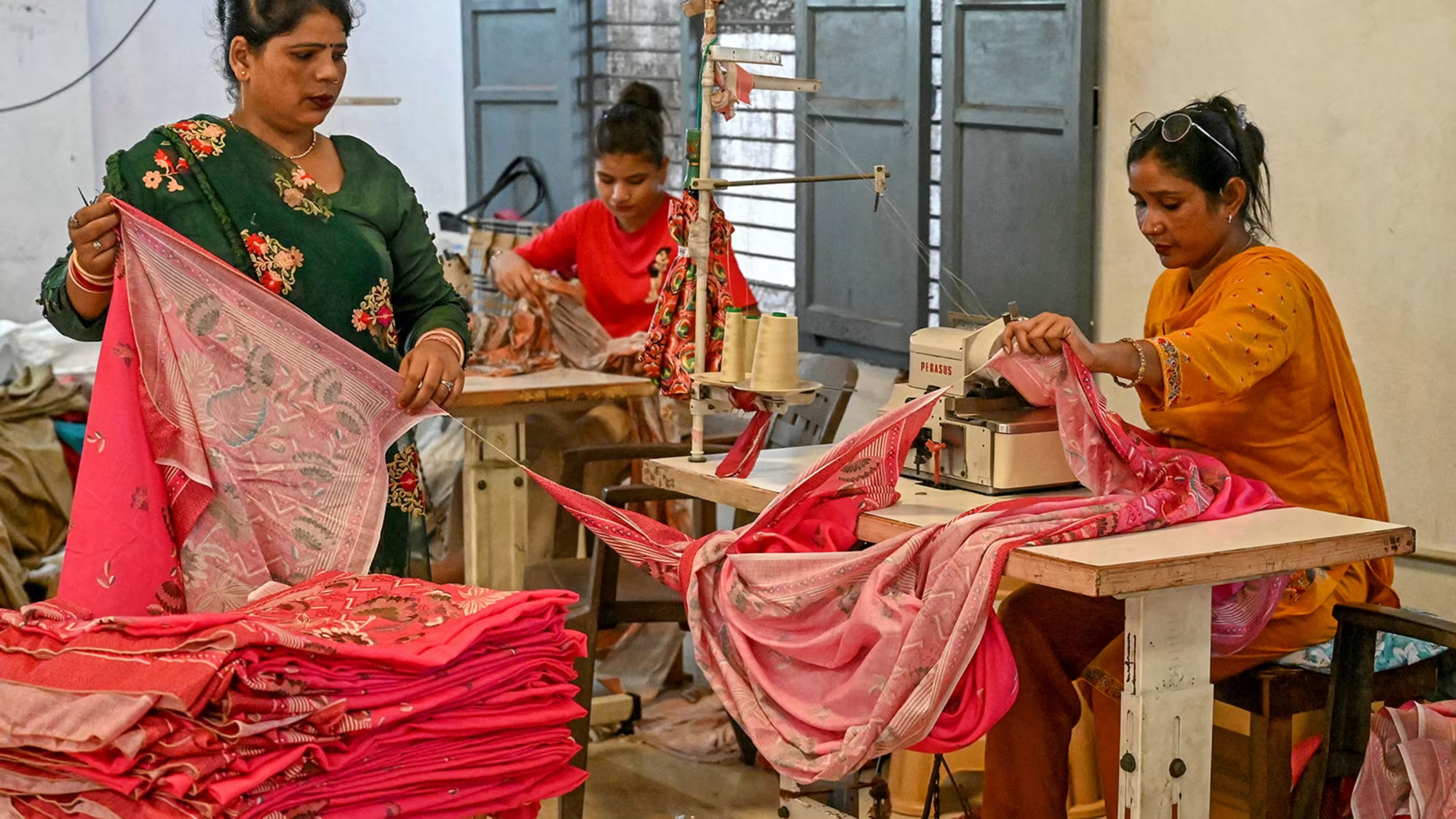When 38-year-old Jinul Abedeen mastered the ancient embroidery technique of zardozi two decades ago, it promised a stable livelihood for him and his family. For the past 12 years, he has stitched garments at Orient Craft, a leading Indian exporter that supplies global brands like Ralph Lauren and American Eagle. But that livelihood is now at risk.
On Wednesday, the United States imposed sweeping 50% tariffs on Indian goods — among the highest levies Washington has placed on any trade partner. The White House cited both India’s purchases of Russian oil and President Donald Trump’s “America First” pledge to shrink trade deficits. The move threatens exports in garments, diamonds, steel, and automobiles, and collides head-on with Prime Minister Narendra Modi’s “Make in India” vision.
Factories in crisis
For Orient Craft, which sends 82% of its products to the U.S., orders are already being delayed. “If the company is in trouble, we are in trouble,” Abedeen said. Veteran worker Neeraj Pandey, who has put two children through postgraduate studies on his modest income, fears losing everything. Women like Sumitra Devi, who entered the workforce for the first time and put her daughters in private school, now face the prospect of slipping back into poverty.
Company owner Sudhir Dhingra calls the downturn “worse than Covid,” while industry analysts warn U.S. orders worth billions could collapse by as much as 90%. Across India, millions of workers in textiles, cotton, and jewelry may soon find themselves without jobs.
Ripple effects across industries
The diamond industry in Surat, which processes 90% of the world’s rough diamonds and employs about five million people nationwide, is bracing for a downturn. “Any slowdown will have a 100% impact, potentially leading to job losses and salary cuts,” warned Jayantibhai Savaliya of the Gem and Jewellery Export Promotion Council.
Ajay Srivastava of the Global Trade Research Initiative said India could effectively be erased from key U.S. markets. “Indian garments become uncompetitive against Vietnam’s 20% and China’s 42% tariffs, leaving little chance to retain U.S. buyers,” he noted.
A clash of visions
Trump’s tariff drive mirrors Modi’s nationalist push, with both leaders emphasizing sovereignty and self-sufficiency. But while Modi has staked his political brand on expanding manufacturing and lifting millions out of poverty, Trump’s levies strike at India’s biggest export market.
The Modi government has denounced the tariffs as “unfair” and pledged not to compromise on domestic priorities like protecting farmers and fishermen. Still, officials are moving quickly to soften the blow by suspending import duties on raw materials and accelerating trade talks in other regions.
Short-term pain, uncertain long-term gains
Experts say India’s domestic market and steady growth — projected at 6–7% — will cushion some of the blow, preventing a full-scale economic crisis. Yet the damage to livelihoods could be severe, with millions of factory workers caught in the crossfire of global geopolitics.
For people like Pandey, the uncertainty is devastating. “If my job goes away, I have no other work. I don’t know how to do anything else,” he said. “If they can come to a compromise, that would be better. If not, what can we do?”

